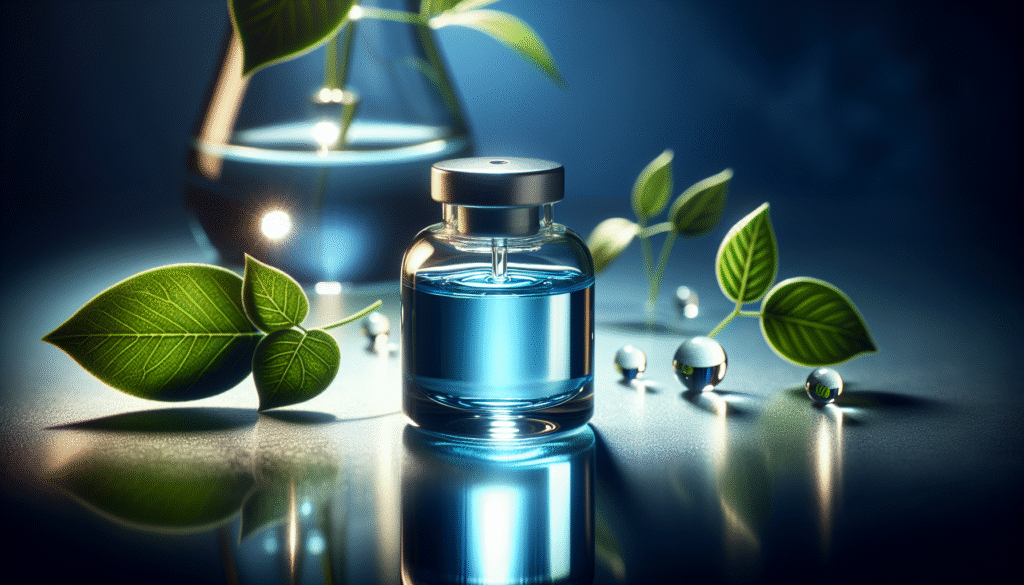
What if there was a compound that could not only help improve your health but also contribute to your quest for youthful vitality?

Understanding Methylene Blue
Methylene blue (MB) is a synthetic dye, originally developed in the late 19th century for use in various applications, including histology and as a treatment for malaria. While its medical applications are diverse, it is gaining traction in the realm of anti-aging. This article will unpack the potential benefits of methylene blue, specifically in the context of aging and longevity.
The Historical Use of Methylene Blue
Methylene blue has a rich history. Initially used to treat malaria, it has also found uses in staining cells for microscopy and as a redox indicator in chemical experiments. Its safety profile led to further research into its therapeutic potentials, from being used as a urinary antiseptic to its application in mitochondrial disorders. Understanding its historical significance helps frame its contemporary uses, particularly for anti-aging.
Mechanism of Action
Methylene blue functions primarily as an electron donor within the mitochondrial electron transport chain. By facilitating the transfer of electrons, it plays a crucial role in promoting ATP activity—the molecule responsible for energy transfer within cells. This action not only helps sustain cellular energy but may also protect cells from oxidative stress, a key player in the aging process.
Antioxidant Properties
One of the standout features of methylene blue is its antioxidant capability. Free radicals—unstable molecules that can cause cellular damage—are generated during normal metabolic processes. In excess, they contribute to aging and degenerative diseases. Methylene blue helps neutralize these harmful free radicals, thereby enhancing cellular integrity and longevity.
Neuroprotective Effects
Recent studies suggest that methylene blue may exert neuroprotective actions. Given its ability to improve mitochondrial function, it can help reduce the risk of neurodegenerative diseases such as Alzheimer’s and Parkinson’s, promoting cognitive health during the aging process. This aspect is particularly crucial, as maintaining cognitive function is often one of the foremost concerns associated with aging.
The Science Behind Aging
Before delving deeper into methylene blue’s anti-aging properties, it is essential to understand aging’s scientific underpinnings:
Theories of Aging
Several theories attempt to explain the biological basis of aging, including:
| Theory | Description |
|---|---|
| Wear and Tear | Over time, accumulated damage leads to cell death. |
| Genetic Control | Aging is pre-programmed by genetic codes. |
| Telomere Shortening | Shortened telomeres limit the number of cell divisions. |
| Free Radical Theory | Accumulation of free radicals causes cellular damage. |
Each theory highlights different aspects of aging, and understanding these can provide insight into how methylene blue interacts with biological systems aimed at counteracting these aging mechanisms.
Cellular Aging: Senescence and Apoptosis
Cellular aging involves two crucial processes: senescence and apoptosis. Senescent cells accumulate over time and can contribute to inflammation and tissue dysfunction. Methylene blue has shown promise in influencing these processes, potentially delaying the onset of cellular senescence and reducing apoptotic rates, thereby enhancing tissue health and function.
The Clinical Evidence
A growing body of research supports the anti-aging benefits of methylene blue. Diving into the studies can clarify what you may expect.
Prevention of Cognitive Decline
In a controlled study involving older adults, participants treated with methylene blue exhibited improved cognitive function when assessed on memory and executive function tasks. The results indicate that enhancing mitochondrial function through methylene blue can lead to notable improvements in mental performance.
Skin Health
Topical applications of methylene blue have been studied for their potential benefits to skin health. It has been shown to enhance collagen synthesis and improve skin elasticity, two vital components in combating the visible signs of aging such as fine lines and wrinkles.
Metabolic Benefits
Some research has demonstrated that methylene blue administration can lead to enhanced metabolic rates, particularly in individuals experiencing metabolic syndrome. By improving metabolic function, it may assist in managing body weight effectively—an essential aspect of aging well.
The Potential Side Effects
Although methylene blue shows promise, you must also consider any potential risks involved with its use.
Common Side Effects
While generally safe for most individuals at the appropriate doses, methylene blue may cause side effects. Here are some commonly reported ones:
| Side Effect | Description |
|---|---|
| Skin Discoloration | Prolonged exposure can lead to a blue tint in the skin. |
| Gastrointestinal Issues | Nausea or abdominal pain may occur in some individuals. |
| Allergic Reactions | Skin rashes or itching, though rare, may manifest. |
| Drug Interactions | Methylene blue can interact with other medications. |
Considerations for Use
Before incorporating methylene blue into your routine, it is crucial to seek advice from a healthcare professional, especially if you are pregnant, nursing, or taking medications that could interact negatively with methylene blue.

Dosage and Administration
If you find that methylene blue’s potential benefits align with your health goals, understanding the appropriate method and dosage is essential.
Recommended Dosage
Studies have typically used doses ranging from 30 to 300 mg per day. However, it is vital to start with the lower end of this range and consult a healthcare professional to determine the optimal dosage for you.
Administration Methods
Methylene blue can be administered in various forms, including:
| Form | Description |
|---|---|
| Oral Tablets | Convenient for individuals preferring to swallow pills. |
| Liquid Form | Can be administrated via drops, easily ingested. |
| Topical Solution | Applied directly to the skin for localized effects. |
By understanding these forms, you can choose the method that fits best with your lifestyle.
Integrating Methylene Blue Into Your Anti-Aging Regimen
To optimize the potential anti-aging benefits of methylene blue, consider integrating it seamlessly into your overall wellness approach.
Nutritional Synergy
Combining methylene blue with a nutrient-rich diet can enhance its efficacy. Foods rich in antioxidants, such as berries, nuts, and leafy greens, can further bolster your body’s ability to combat oxidative stress and promote overall health.
Lifestyle Factors
Incorporating regular exercise, stress management techniques, and adequate sleep can amplify the benefits of methylene blue. Each of these factors contributes to cellular health and metabolic efficiency, effectively rounding out your anti-aging strategy.
Conclusion
Methylene blue holds promise as a significant player in the sphere of anti-aging. With its multifaceted benefits ranging from antioxidant properties to metabolic support, it warrants further consideration for those seeking to maintain vitality as they age.
While the literature surrounding methylene blue continues to grow, integrating it wisely into a broader health strategy involving diet, exercise, and mindful living will yield the best results. By evaluating these elements and listening to your body, you can enhance your journey towards graceful aging and improved overall well-being.
Combining informed choices with the right tools can help you harness the potential of methylene blue in your anti-aging toolkit. With careful consideration and expert guidance, your quest for longevity and vitality may indeed become more attainable.